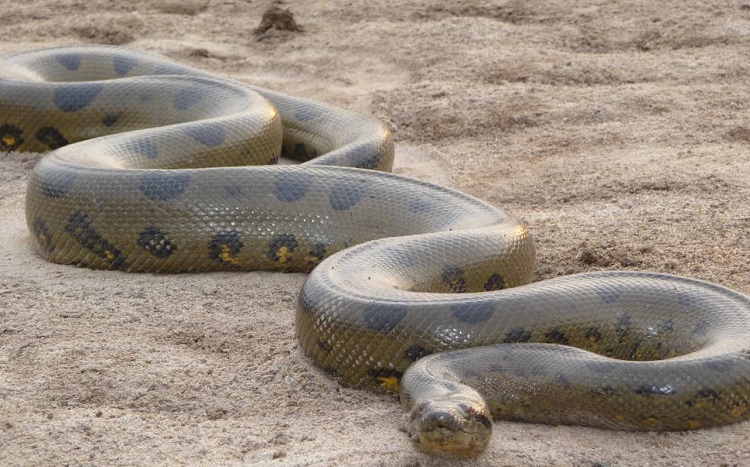Anaconda snakes are some of the most beautiful creatures in the world and have become a household name thanks to movies such as “Anaconda.” While you might have seen the movie or heard stories about anacondas, did you know there are more than one species or where they live?
Well, I am going to tell you everything you’ve ever wanted to know about the anaconda snake, including where anacondas live and what they like to have for dinner.
While we’re at it, I will tell you what predators anaconda snakes have and whether or not they really eat humans, like we’ve all heard stories about in the past.
Etymology
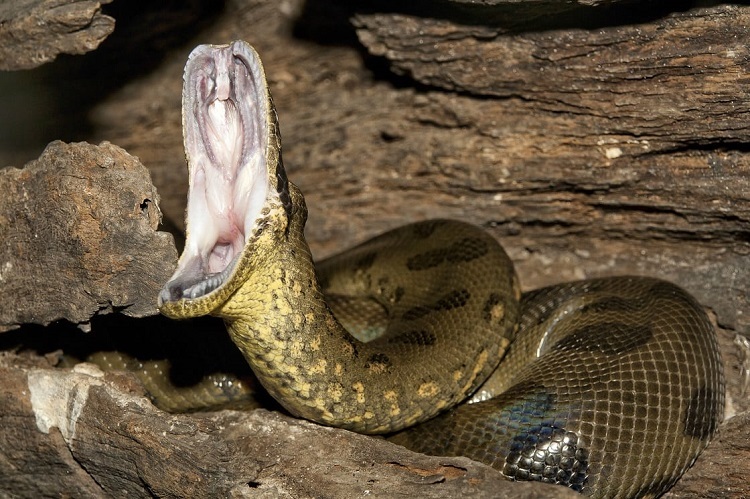
The first time the word anaconda was used was in 1748, likely from Sinhalese henakandayā, which translates to a slender green snake. It came from the word “anaconda,” which meant python.
Anaconda Natural History
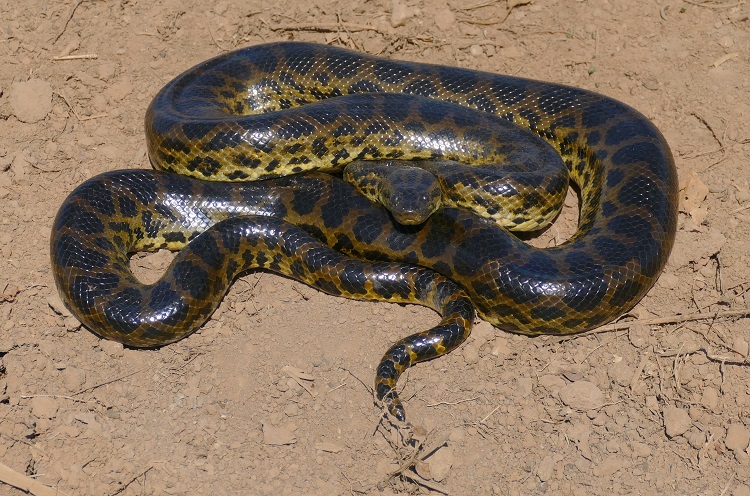
The anaconda snake belongs to the Boa family of snakes, including Pythons and anacondas, and is scientifically known as the genus Eunectes. These large snakes, which average 30 feet in length, live in South America and are mostly located within the Orinoco and Amazon forests.
You’ll find that anaconda lives in slow-moving streams, marshes, and swamps. The anaconda has exceptional swimming abilities and will sit and wait for its prey for as long as it takes. The common prey for an anaconda diet are birds, goats, other snakes, and elk.
Anaconda Species
While you may think there’s only one variety of anaconda or genus Eunectes, the truth is that there are four prevalent anaconda species which include:
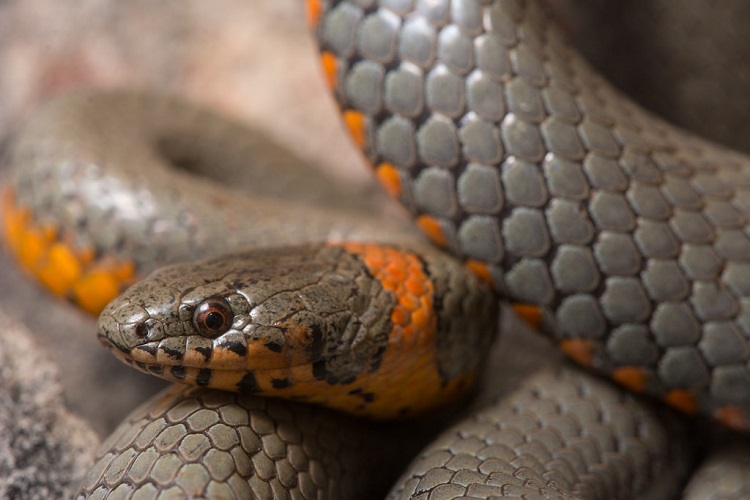
- Green Anacondas– The Green anaconda or Eunectes murinus is the most commonly known anaconda, and it’s the heaviest snake in the world! The Olive Green anaconda is native to the northern portions of South America.
- Yellow Anaconda- Yellow anaconda, which also goes by the name Paraguayan anaconda, is native to South America and can be found in the southern area, such as through Paraguay, northeastern Argentina, Bolivia, and Brazil.
- Dark-Spotted Anacondas- Dark-spotted anaconda is also called De Schauensee’s anaconda. Its habitats in South America are being destroyed due to development and agricultural growth. You’ll find the dark-spotted variety hanging out near the Amazon River.
- Bolivian Anaconda- Sometimes referred to as the Beni anaconda, the Bolivian anaconda species of the second largest snake in the world is found in the Beni region of Bolivia.
Anaconda Physical Appearance

The physical appearance of an anaconda varies slightly depending on the species, such as the Green anaconda, Eunectes murinus, or Bolivian anaconda. Regardless, all varieties have flexible jaws, stretchy ligaments, and very strong muscles that allow them to constrict and suffocate their prey.
When you think about an anaconda, you’d be right to imagine a very thick and long body since the anaconda is the second largest snake in the world after the reticulated python.
The Green anaconda, scientifically known as the Eunectes murinus, is mostly a darker green snake and has black and brown spots that can be found in various places on its body. It has spots on its side that have yellow centers. South America’s green anaconda is muscular, long, and thick.
The green anaconda can weigh up to 550 pounds and reach lengths over 30 feet long! The head of the Eunectes murinus is smaller and more narrow than its body, with eyes at the top of the head to support an aquatic adventure.
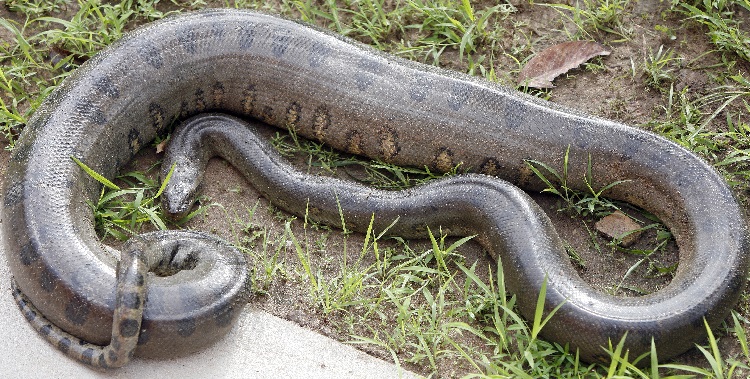
Yellow anacondas are yellow or may have a dark brown coloring with black and brown spots on their bodies. Unlike the Green anaconda, the spots are less uniform and vary in shape and size. The Yellow anaconda often is between 10 feet to 14 feet long.
Dark-spotted anacondas have a green or greenish-brown base color, and you’ll see dark spots throughout its body. Anacondas of the dark spotted variety only reach up to 7 feet in length.
Bolivian anacondas have either a yellow-brown or green coloring, and there are several dark brown blotches all over the body. With a length of 10 feet to 14 feet, the Bolivian anaconda weighs between 50 and 70 pounds.
Anaconda Behavior Wildlife Sanctuary
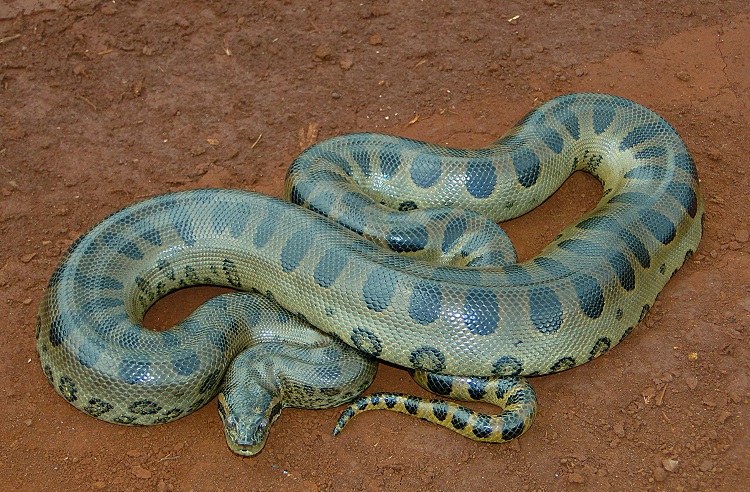
An anaconda will behave in a sanctuary as it would in the wild, which means it will be solitary and enjoy the title of the biggest snake. They will stay on land if the temperatures are warm enough for them but are provided with water sources to live in as well.
In a sanctuary, they are routinely fed dead rodents and rabbits. The anaconda is active at night and early evening, just like they would be in their natural habitats.
Living in a wildlife sanctuary is all about the conservation of the genus Eunectus. It allows them to be safe from human threats and have about twice the average lifespan of a wild anaconda.
Anaconda Natural Habitat
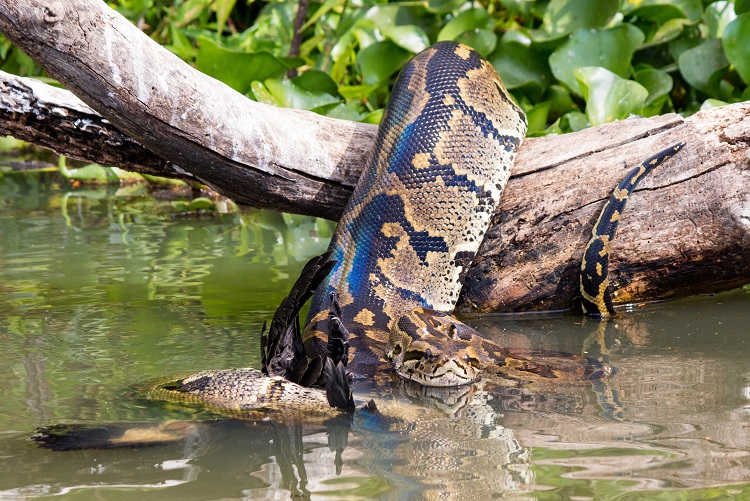
In their natural habitat, you’ll find anacondas in South America since they love humidity and swamps. The rainforests in Peru, Guyana, Bolivia, southern Brazil, Ecuador, Colombia, and Venezuela are some of the locations within tropical South America to find the largest snake in the world!
The snakes love hanging out near slow-moving rivers or other bodies of water, which is why land conservation is so important.
Anaconda Diet
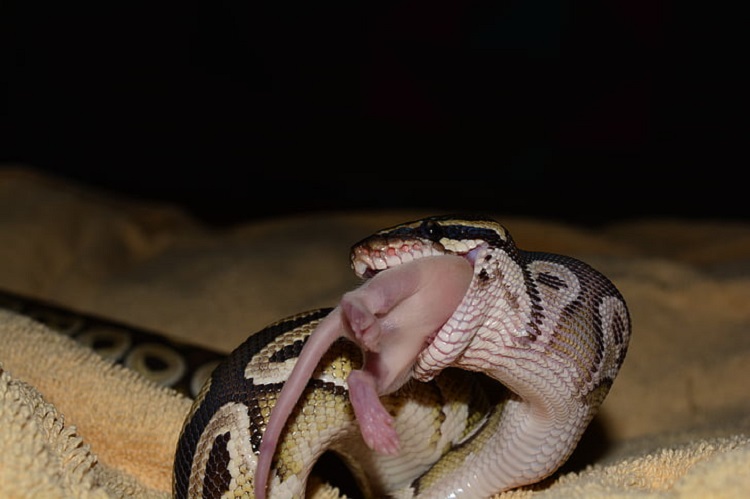
The diet of an anaconda is that of a carnivore, so these creatures seek out fish, mammals, and reptiles. Since anacondas are aquatic and work up an appetite, they can eat anything they want to kill!
An anaconda constricts its body around its prey to suffocate them. I find it fascinating that they can overtake large animals, such as the caiman, relatives of crocodiles. These giant snakes are not venomous, so no poison is released when they kill prey.
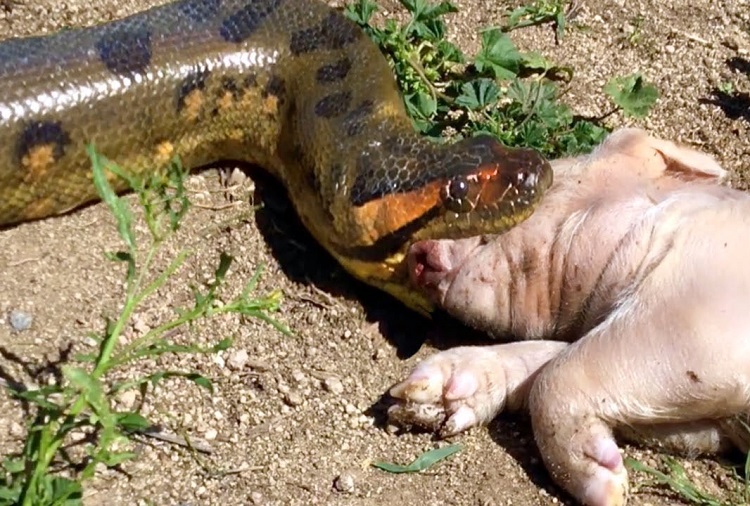
In the common anaconda diet, the second-biggest snake in the world eats a variety of large mammals and small animals, such as:
- Dogs
- Wild Pigs
- Sheep
- Birds
- Deer
- Jaguars
- Bird eggs
- Rodents
- Turtles
- Caimans
- Frogs
- Fish
- Capybara
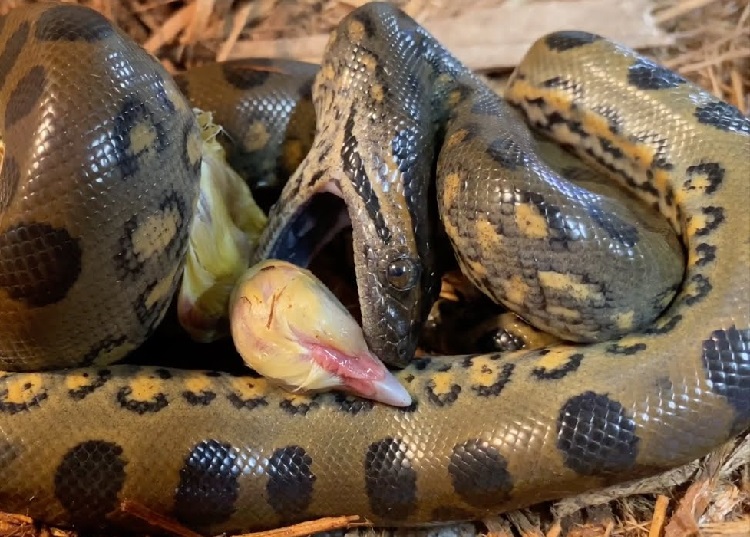
Anaconda Reproduction
Spring is when females begin leaving a scent trail or might release an airborne chemical that will bring about the male anacondas. Young anacondas reach sexual maturity when around 3 to 4 years old, and this is when the green anacondas mate.
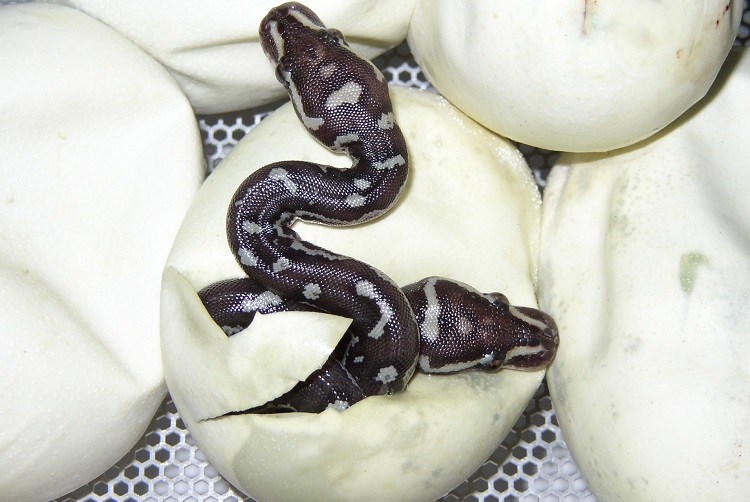
During mating season, the females do not venture very far after releasing their scent and wait for the males to find them. It’s common for males to stick their tongues out, which helps them locate the scent of the female.
These giant snakes are ovoviviparous, which means that the eggs are produced but stay internal and do not come out until the babies are born. This likely is because of external conditions such as humidity and water.
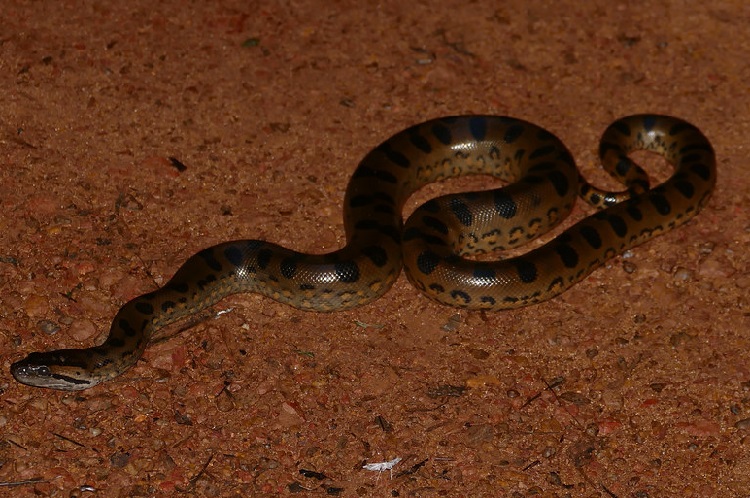
A female won’t eat while she’s pregnant, which lasts about 7 months since, during this time, it would be a danger to the unborn to go out hunting prey.
One female anaconda can have 30 babies, although this number can vary depending on the size of the female. Larger females tend to have more babies than small ones. I find it incredible that young anacondas can be as small as one pound but soon grow up to become the largest snakes around.
Are Anacondas Venomous?
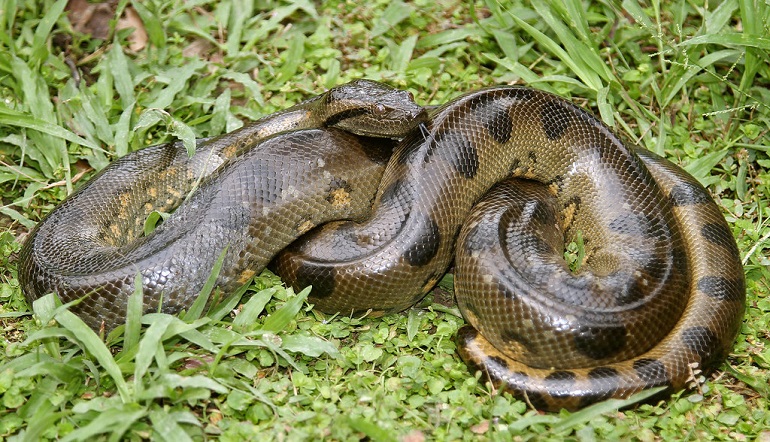
As one of the largest snakes, anacondas are non-venomous just like other boas, and are nothing but a large snake.
Interesting Facts about Anacondas
I have quite a few interesting facts about anacondas that I wanted to share with you so you can get to know these beautiful creatures even better!
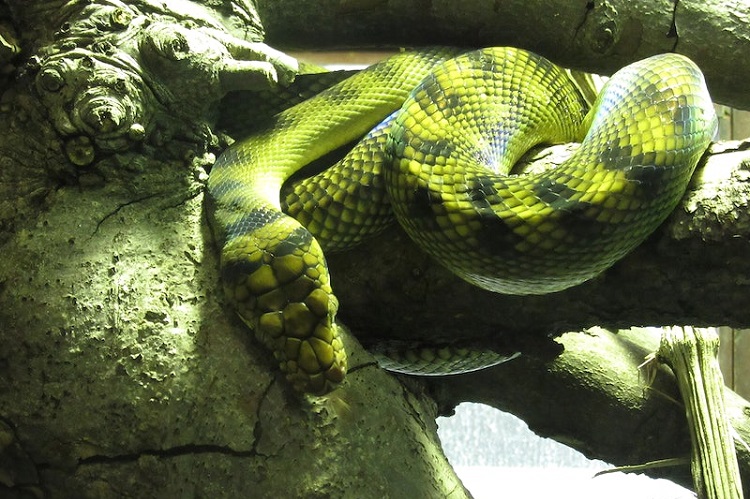
For example, did you know that the male anacondas may wrestle each other above the body of the female snake, and the winner of the fight is the first to mate with the female snake? There could be up to 12 male snakes in this pile, known as a “breeding ball.”
Other facts about anacondas that I thought you’d find interesting and will help you get to know them include:
- Anacondas are largely solitary creatures, which means they’d rather be alone than with one another, except during mating season.
- An anaconda can stay submerged underwater for 10 minutes without coming up for air and are excellent swimmers!
- Newborn anacondas survive through instinct, and their mothers do not have to provide them with any direction or help.
- Anacondas do not chew their food, but instead, digestive juices slowly break down the animal that was swallowed whole.
- Female anacondas are larger than males, which I bet you find to be intriguing since we usually think of boys as being bigger.
- Anacondas have very flexible jaws that can open incredibly wide and allow them to swallow the large animals they like to feast on after constricting their bodies around their prey.
Lifespan
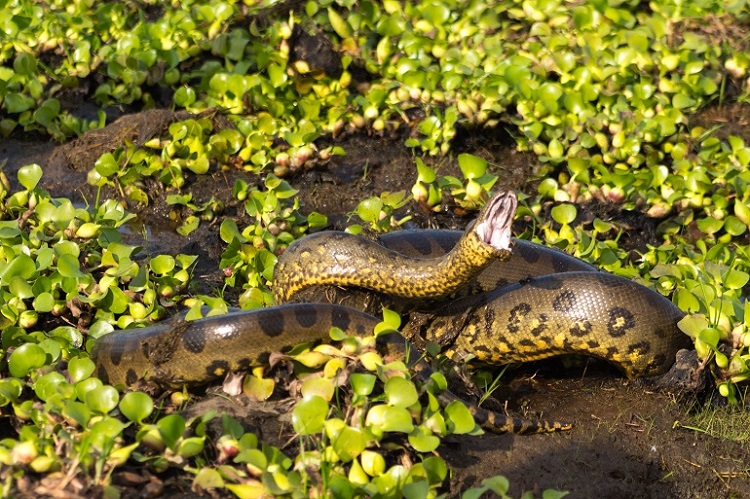
The average life span of one of the largest snake in the world depends on whether it’s in the wild or being cared for by humans.
In the wild, anacondas only live for about 10 years and are endangered, but when they are taken care of by humans, they can live well into their 20s.
Anaconda Predators and Threats
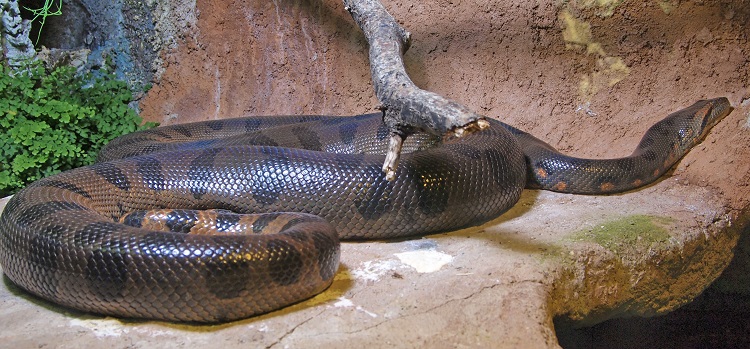
The adult anaconda does not generally have any predators since they are at the top of the food chain, being such a huge snake. However, the babies have predators that adult anacondas don’t have, including birds and even jaguars.
The biggest threat to the snakes in the world is humans because people routinely kill them out of fear and also have caught them to kill for their skin.
Humans have also destroyed much of their habitat within the wetlands and rainforests near the Amazon, which poses a huge threat to these creatures and is why they are endangered.
FAQ’s
How Big Do Anacondas Get?
Did you know that anacondas can reach a length of 30 feet long and 12 inches wide?
Their size can vary depending on factors such as specific species and whether they are male or female. What’s even cooler is that an anaconda can weigh as much as 550 pounds!
Do Anacondas Eat People?
While we’ve all heard the stories, there is no evidence to suggest that anacondas have eaten people. This means that the giant snake stories were made up, just like in 1768 when they were wrongly named an elephant killer when it was actually a python.
What Do Anacondas Eat?
Since anacondas are carnivores, they seek out mammals, reptiles, or fish for the most part, although they have been known to eat other snakes. Some of the most common animals that these large snakes eat include sheep, birds, deer, jaguars, dogs, and wild pigs.
Conclusion
I hope you have gotten familiar with these amazing species by now. Being the largest and heaviest snake in the world, a green anaconda weighing 227 kg also holds a world record. They are gorgeous reptiles, and we should all play a part in protecting their wild habitats.
Anacondas are also kept as pets by humans. But before you plan on getting an anaconda for your humble abode, make sure you are up for the responsibility.


